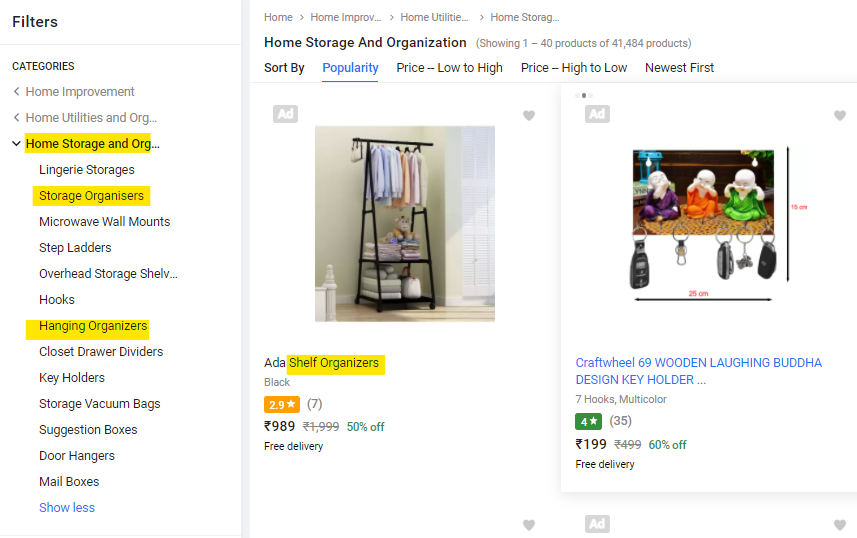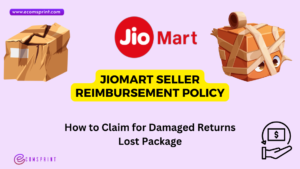Despite the fact that eCommerce Search Engine Optimization (SEO) offers the highest return on investment of any marketing effort, most online stores are built with search engines in mind.
We rely on social media or paid advertisements instead. Which is fine and all, but it necessitates consistent labour and a steady supply of revenue.
SEO, on the other hand, just necessitates initial effort; once you rank, you can essentially sell on autopilot with no ongoing costs.
Traffic that is FREE, recurring, and converts well. That’s exactly what you’re going to learn here.
Important eCommerce Search Engine Optimization Techniques to Consider
- Customers are searching for certain terms, so do some keyword research to figure out what they’re looking for.
- Based on your keyword analysis, create a site architecture.
- Strategic keyword optimization in meta tags and content for on-page SEO.
- To ensure that search engines can crawl your site properly, use technical SEO.
- Local SEO can help you get more organic traffic in your area (if you have a brick and mortar).
- To drive more organic traffic, use content marketing.
- Link building is a technique for increasing the authority of a website.
- Using Google Analytics and Ahrefs to measure SEO success.
What is Search Engine Optimization (SEO) and Why Should You Care?
Search Engine Optimization (SEO) is the scientific process of optimizing your website for specific keywords in order to rank higher in search engines like Google.
While there is a lot of knowledge about the technical components of SEO, there is also a creative user experience and design side to it.
Google’s goal is to rank search results that are so good at answering all of the searcher’s questions that they don’t need to come back to Google for more information.
So, how do you go about doing that?
- Reveal the most comprehensive solutions to the topic’s most common inquiries.
- To further convey your views, use better photos, videos, or examples.
- Improve the user experience by making the site faster, making it more mobile-friendly, making the interface more intuitive, and so on.
- Encourage people to talk about (and link to) you.
For eCommerce, this entails producing detailed, vivid product descriptions, as well as attractive, eye-catching photos and a large number of customer evaluations to assist visitors in making purchasing decisions. - Making purchasing easy for visitors by making buttons large enough, keeping your site clear of bugs, and displaying social proof of your greatest products.
- Providing your site visitors with product comparisons to your competitors so they don’t have to leave to conduct additional research.
You’ll claim the top rankings if you’re the ideal place for a customer to shop (and you’ve done your SEO homework).
Isn’t it wonderful how simple it is?
How to perform eCommerce Search Engine Optimization
You’re undoubtedly wondering how to undertake eCommerce keyword research, figure out keyword difficulty (KD) and search volume, and figure out buyer intent.
There is three main methods:
- Ahref SEO Tool
- Amazon Marketplace
- Competitor Analysis
Ahref SEO Tool
Ahrefs is an all-around fantastic SEO tool. It can be used for keyword research, competition analysis, backlink building, and much more.
Let’s focus on how to use it to conduct eCommerce Search Engine Optimization keyword research fast and easily.
Put your URL into the Site Explorer search field after you’ve signed up for an account. Select “Organic search” from the drop-down menu…
You’ll see all the terms your site ranks for if you scroll down and select “View full report” under the Top 5 organic keywords area. There are far too many to go through one by one.
Fortunately, you can narrow down the results to find exactly what you want. I’m looking for my low-hanging fruit, which are the terms I can rank at 5-10 position.
Because you’re currently on the first page, these are low-hanging fruit, which means you should be able to rank higher with effective on-page SEO and possibly some link building (more on that in the on-page SEO and link building sections).
To find them, use the Position filter, which has a minimum of 3 and a maximum of 10.
By clicking the Traffic column, you can arrange this by traffic in descending order. You can also set a minimum traffic filter, such as no less than 200 searches per month, if you like.
Now, use the “Export” option in the upper right to export your low-hanging fruit keywords to a CSV file, and copy-paste them into a new tab in your spreadsheet. (I refer to this tab as “Low Competitive Keywords”)
Let’s now take our competitor’s keywords.
This time, use the site explorer tool to find a competitor and navigate to the same Organic Keywords page. Apply the following filters to find gold nuggets:
Position maximum of 20
KD maximum 15
Volume minimum 200
This will show you all of your competitor’s low-difficulty, relevant keywords that they are ranking for!
Isn’t that incredible?
If you don’t obtain enough results, remove the volume minimum — some niches won’t have a lot of search volume. I just use this to limit the number of keywords to those with the highest potential and to keep the total quantity manageable.
Okay, I know you’re probably drowning in keyword suggestions right now, but here’s another: The gap filler for content.
This handy tool displays all of the keywords that your competitors rank for but you don’t. In the top three fields, type three (or more) competitors, and your website in the bottom field.
Then select “Show keywords” to be flooded with possibilities! Simply use the filters we used before to identify the best ones, then export and copy-paste them into your spreadsheet.
So, now that you’ve come up with tonnes of key term ideas, how do you decide which ones to use?
2. Amazon Marketplace Keyword Research
People literally search on Amazon with the aim of buying something, hence Amazon is a treasure mine of high buyer intent keywords.
Start putting in your seed keyword to search keywords on Amazon. This is a term you believe you’d like to rank for.
For example, we could type “organizer”

Autofill suggestions include organizer bins, cart, box, and more. Put all of these keyword suggestions into a Google spreadsheet to save for later.
This could take a long time if you have hundreds or thousands of products, as you can imagine. The Amazon Keyword Tool can help you with that.
This helpful program automatically scans Amazon’s autofill suggestions for any keyword you enter in. It allows you to conduct 3 FREE searches per day without having to pay anything.
Check tick all the keywords and add them to your list each time you search, then use the “Get Selected Keywords” option to download the list as a CSV.
However, we can’t just pick these terms at random. Before we choose the ones we employ in our store, we still need to assess search traffic, difficulty, and even consumer intent.
But, for the time being, let’s speak about different techniques to come up with keyword ideas.
3. Competitor Analysis
If you have competitors who rank higher in search results than you, you can take keyword ideas from their websites.
To begin, enter your search into Google and select a competitor website.

Then look for keywords on their category and product pages.

However, don’t just copy and paste your competitor’s keywords! Just because they rank higher than you doesn’t indicate they’ve chosen the finest keywords; it could just be that they have a greater domain authority (DA) than you.
Create a Site Architecture
It’s time to put what you’ve learned about the best keywords to target to work for you.
This begins with the structure of your website.
The architecture, or structure, of an eCommerce site, refers to how you organise your navigation, category pages, and product pages. It’s all about getting the greatest, most relevant content in front of users and lowering the number of clicks required to get it.
Great site structure follows two “golden rules”:
- Make it scalable and simple.
- It should take no more than three clicks to navigate from one page to another.
Create highly relevant page URLs and subdirectories using keyword research.
Your Home page is usually the most authoritative page on your website. Internal links between pages on your site convey part of the “link juice” or “authority” from one page to the next. This was once known as PageRank, but that word is no longer used by Google.
Your Homepage should link to all-important category pages on your site and also should link to some popular blogs and important pages. Proper internal linking and navigation help the user is getting access to the information easily and improves the authority of your site.
To give an idea of internal linking, you can include a section of “related products” below each product page. This helps in building more internal links and increase your AOV (Average Order Value) at the same time.
On-Page Search Engine Optimization Ideas
A successful Ecommerce Search Engine Optimization cannot be done without a proper on-page SEO plan. On-Page SEO is the heart of Google Ranking. Keywords play a very important role in ranking your e-commerce product pages.
For the On-page SEO of e-commerce sites, we mainly focus on three sections; Category Pages, Product Pages and Blog Content.
Yes, you need to have a blog as well if you want to taste the fruit of FREE website traffic.
Ecommerce Search Engine Optimization for Category Pages
For an eCommerce website, category pages are the most important pages to consider. If we are able to rank out category pages on Google, this can be a gold mine for us because once a user land on our category pages he/she gets access to all the products inside that category page.
So, let’s see how can we can optimize our category pages.
1. Use Primary Keyword in URL
- Use the primary keyword in the URL.
- Your category URL should be short, simple, readable and user-friendly.
- The use of word collection in the URL is not recommended as it’s not SEO friendly. If you are using Shopify, they include the word “collection” by default and nothing can be done about it. But incase you have built your eCommerce website on WordPress, you can implement this tip.
2. Use the main keyword in the Collection title or heading
3. Include short description in the Collection Page
This is an added advantage that most e-commerce website owners do not know about. Writing a short or introductory description on your collection page including your main keyword will help in SERP ranking.
Write at least 200-300 words introduction having 2-3 related keywords.
For example, a short description for a “Laptop Stands” category on your eCommerce website can be written like this:
“The finest laptop stands bring the screen closer to eye level, which is helpful for keeping good posture. Some can even be so portable that they can be packed into a backpack for easy travel, and some can switch from sitting to standing.
Whether you are a programmer, a blogger, or entrepreneur PrettyGadgets have a huge collection of great multifunction adjustable laptop stands which fit everyone needs.”
4. Category Image ALT Text
ALT text is the medium by which google recognizes an image and know what it’s about. Well-written alt text is important to your website’s accessibility, and its search engine optimisation (SEO).
Include your target keyword in the alt text of the collection image.
5. Include Keywords in Meta Description
Though metadata does not directly impact your SERP ranking it can help increase your chances of getting more clicks and an increase in CTR ultimately improves your ranking.
Once you have implemented these SEO techniques, you can move on to Product Pages.
Ecommerce Search Engine Optimization for Product Pages
There is not much difference in SEO for Category pages and Product pages.
On product pages also we need to do these:
Use primary keywords in URL and product title, write a keyword-oriented short description, meta-description, image ALT text, etc.
Points to keep in mind while writing SEO friendly product pages.
- Write ALT image text in all product images and description images.
- The product description of your popular products should be at least 1000-1100 words long and should include your main keywords at least 3-4 times. Keep in mind that long types of content have better chances of ranking on Google SERP.
- Try to collect reviews from every customer. The more the number of reviews the greater is your conversion rate. Google prefers to rank websites that have greater CTR and greater conversion rates.
- Use LSI keywords




